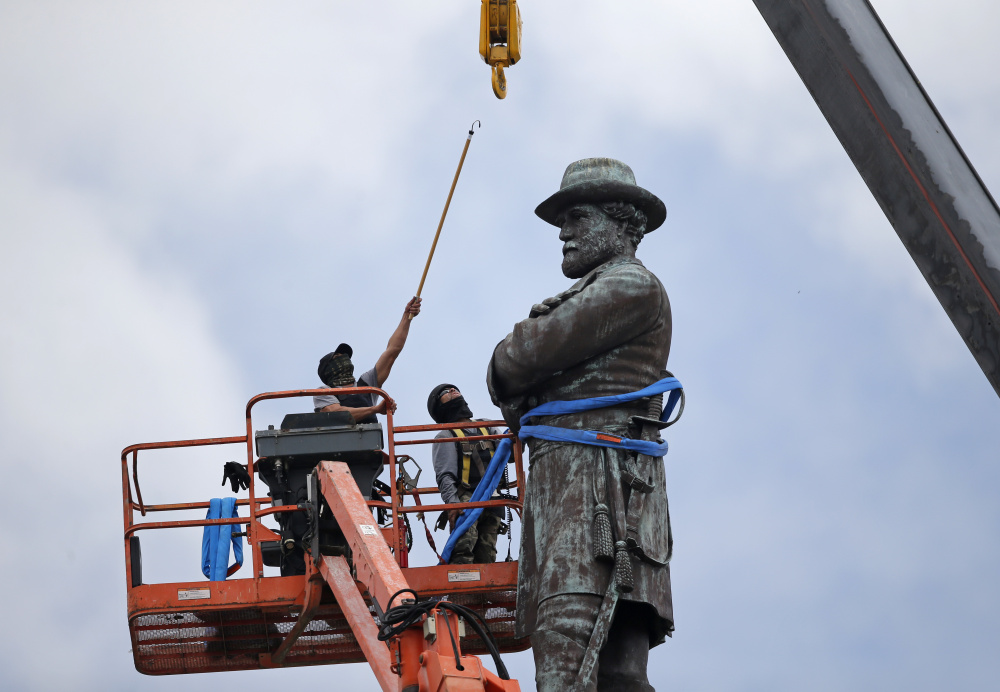Memorial Day is one of those times that reminds us that history is all around us and part of our lives.
The past is dead and cannot change, but history is alive and always changing because it is the record of the things we choose to remember.
Memorial Day is set aside to remember the men and women who gave their lives serving their country in war. We honor their sacrifice. We remember them, and we want our children to march in parades and listen to speeches so that they will remember, too.
This goes on, generation after generation, almost invisibly. But in the South right now, it is a process that involves earth movers and cranes, as southern cities discuss the removal of monuments honoring leaders of the Confederacy like Robert E. Lee, Jefferson Davis and P.G.T Beauregard.
In a moving speech last week, New Orleans Mayor Mitch Landrieu explained why it was time to remove these statues from public spaces in his city because of the message that honoring this part of the past sent to the people of today.
The statues were not relics of the Civil War itself, Landrieu explained, but from a later period in the early 20th century, when white supremacists held power in the majority black city.
They were a reminder of a social order in which only one race of city residents had full human rights.
“After the Civil War, these statues were a part of that terrorism as much as a burning cross on someone’s lawn; they were erected purposefully to send a strong message to all who walked in their shadows about who was still in charge in this city,” he said.
As white man, Landrieu said he walked by the monuments daily without giving them and serious thought. But it was not until a friend asked him to imagine what it would be like for an African American father to explain the statues and their meaning to a five-year-old daughter that he really understood.
“Can you do it?” Landrieu asked. “Can you look into that young girl’s eyes and convince her that Robert E. Lee is there to encourage her? Do you think she will feel inspired and hopeful by that story? Do these monuments help her see a future with limitless potential? Have you ever thought that if her potential is limited, yours and mine are too?”
Confronting the monuments meant confronting their whole truth, not the one-sided version of history that had been passed on. It meant choosing to remember the parts of the story which had been left out.
“The Confederacy was on the wrong side of history and humanity,” Landrieu said. “It sought to tear apart our nation and subjugate our fellow Americans to slavery. This is the history we should never forget and one that we should never again put on a pedestal to be revered.
As a community, we must recognize the significance of removing New Orleans’ Confederate monuments. It is our acknowledgment that now is the time to take stock of, and then move past, a painful part of our history.”
Almost every town in Maine has a Civil War monument of some kind, and we can be proud of the cause that our Maine ancestors joined 150 years ago.
But even though we don’t have to endure the intense re-evaluation going on in the south, New Orleans’ experience shows the duty that we all owe to history.
It’s up to us to say what we want to remember and carve in stone what we want to make sure that we never forget.
Send questions/comments to the editors.



Comments are no longer available on this story